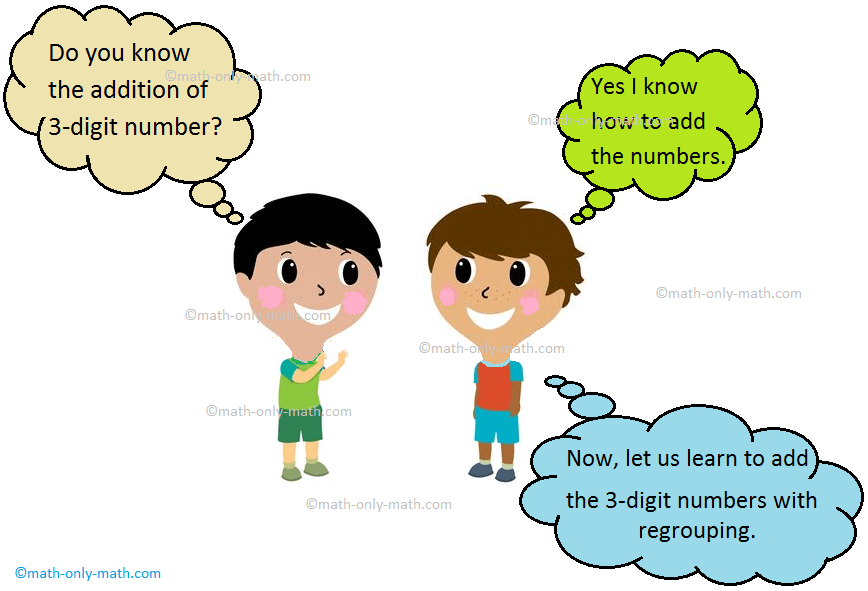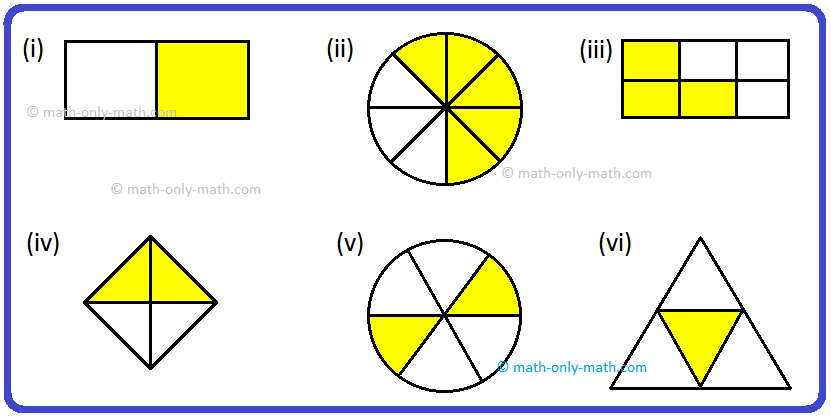Word Problems on Proportion
We will learn how to solve the word problems on proportion. We know if the phone numbers are the ratio of the first two is equal to the ratio of the last two then the phone numbers are said to be in proportional and the four numbers are said to be in proportion.
1. Which number is to be added to each of 2, 4, 6 and 10 to make the sums proportional?
Solution:
Let the required number k be added to each.
Then, according to the question
2 + k, 4 + k, 6 + k and 10 + k will be proportional.
Therefore,
2+k4+k = 6+k10+k
⟹ (2 + k)(10 + k) = (4 + k)(6 +k)
⟹ 20 + 2k + 10k + k2 = 24 + 4k + 6k + k2
⟹ 20 + 12k + k2 = 24 + 10k + k2
⟹ 20 + 12k = 24 + 10k
⟹ 12k - 10k = 24 - 20
⟹ 2k = 4
⟹ k = 42
⟹ k = 2
Therefore, the required number is 2.
2. What number should be added to 6, 15, 20 and 43 to make the numbers proportional?
Solution:
Let the required number be k.
Then, according to the problem
6 + k, 15 + k, 20 + k and 43 + k are proportional numbers.
Therefore, 6+k15+k = 20+k43+k
⟹ (6 + k)(43 + k) = (15 + k)(20 + k)
⟹ 258 + 6k + 43k + k2 = 300 + 15k + 20k + k2
⟹ 258 + 49k = 300+ 35k
⟹ 49k – 35k = 300 - 258
⟹ 14k = 42
⟹ k = 4214
⟹ k = 3
Therefore, the required number is 3.
3. Find the third proportional of 2m2 and 3mn.
Solution:
Let the third proportional be k.
Then, according to the problem
2m2, 3mn and k are in continued proportion.
Therefore,
2m23mn = 3mnk
⟹ 2m2k = 9m2n2
⟹ 2k = 9n2
⟹ k = 9n22
Therefore, the third proportional is 9n22.
4. John, David and Patrick have $ 12, $ 15 and $ 19 respectively with them. Their father asks them to give him equal amount so that the money held by them now are in continued proportion. Find the amount taken from each of them.
Solution:
Let the amount taken from each of them is $ p.
Then, according to the problem
12 – p, 15 – p and 19 – p are in continued proportion.
Therefore,
12−p15−p = 15−p19−p
⟹ (12 – p)(19 – p) = (15 – p)2
⟹ 228 – 12p – 19p + p2 = 225 – 30p + p2
⟹ 228 – 31p = 225 – 30p
⟹ 228 – 225 = 31 p – 30p
⟹ 3 = p
⟹ p = 3
Therefore, the required amount is $ 3.
5. Find the fourth proportional of 6, 9 and 12.
Solution:
Let the fourth proportional be k.
Then, according to the problem
6, 9, 12 and k are in proportional
Therefore,
69 = 12k
⟹ 6k = 9 × 12
⟹ 6k = 108
⟹ k = 1086
⟹ k = 18
Therefore, the fourth proportional is 18.
6. Find two numbers whose mean proportional is 16 and the third proportional is 128.
Solution:
Let the required number be a and b.
Then, according to the question,
√ab = 16, [Since, 16 is the mean proportional of a, b]
and b2a = 128, [Since, the third proportional of a, b is 128]
Now, √ab = 16
⟹ ab = 162
⟹ ab = 256
Again, b2a = 128
⟹ b2 = 128a
⟹ a = b2128
Substituting a = b2128 in ab = 256
⟹b2128 × b = 256
⟹b3128 = 256
⟹ b3 = 128 × 256
⟹ b3 = 27 × 28
⟹ b3 = 27+8
⟹ b3 = 215
⟹ b = 25
⟹ b = 32
So, from equation a = b2128 we get
a = 322128
⟹ a = 1024128
⟹ a = 8
Therefore, the required numbers are 8 and 32.
● Ratio and proportion
- Basic Concept of Ratios
- Important Properties of Ratios
- Ratio in Lowest Term
- Types of Ratios
- Comparing Ratios
- Arranging Ratios
- Dividing into a Given Ratio
- Divide a Number into Three Parts in a Given Ratio
- Dividing a Quantity into Three Parts in a Given Ratio
- Problems on Ratio
- Worksheet on Ratio in Lowest Term
- Worksheet on Types of Ratios
- Worksheet on Comparison on Ratios
- Worksheet on Ratio of Two or More Quantities
- Worksheet on Dividing a Quantity in a Given Ratio
- Word Problems on Ratio
- Proportion
- Definition of Continued Proportion
- Mean and Third Proportional
- Word Problems on Proportion
- Worksheet on Proportion and Continued Proportion
- Worksheet on Mean Proportional
- Properties of Ratio and Proportion
From Word Problems on Proportion to HOME
Didn't find what you were looking for? Or want to know more information about Math Only Math. Use this Google Search to find what you need.
Recent Articles
-
Skip Counting by 5's | Concept on Skip Counting |Skip Counting by Five
Apr 07, 25 10:13 AM
The concept on skip counting by 5’s or fives is an essential skill to learn when making the jump from counting to basic addition. -
Addition of 3-Digit Numbers with Regrouping | Step-by-Step Method
Apr 07, 25 02:53 AM
We will learn addition of 3-digit numbers with regrouping. Do you know the addition of 3-digit number? Yes I know how to add the numbers. Now, let us learn to add the 3-digit numbers with regrouping. -
Worksheet on Fractions | Questions on Fractions | Representation | Ans
Apr 07, 25 02:37 AM
In worksheet on fractions, all grade students can practice the questions on fractions on a whole number and also on representation of a fraction. This exercise sheet on fractions can be practiced -
Counting Numbers from 1 to 50 | Match the Number | Missing Numbers
Apr 04, 25 03:46 PM
In counting numbers from 1 to 50, recognize the numbers, count and then join the numbers in the correct number order. Here we mainly need eye-hand coordination to draw the picture and maintain the num -
Counting Eleven to Twenty with Numbers and Words |Numbers from 11 - 20
Apr 04, 25 03:21 PM
Counting eleven to twenty with numbers and words are explained below. One ten and one more is eleven. Eleven comes after ten. One ten and two more is twelve. Twelve comes after eleven.





New! Comments
Have your say about what you just read! Leave me a comment in the box below. Ask a Question or Answer a Question.